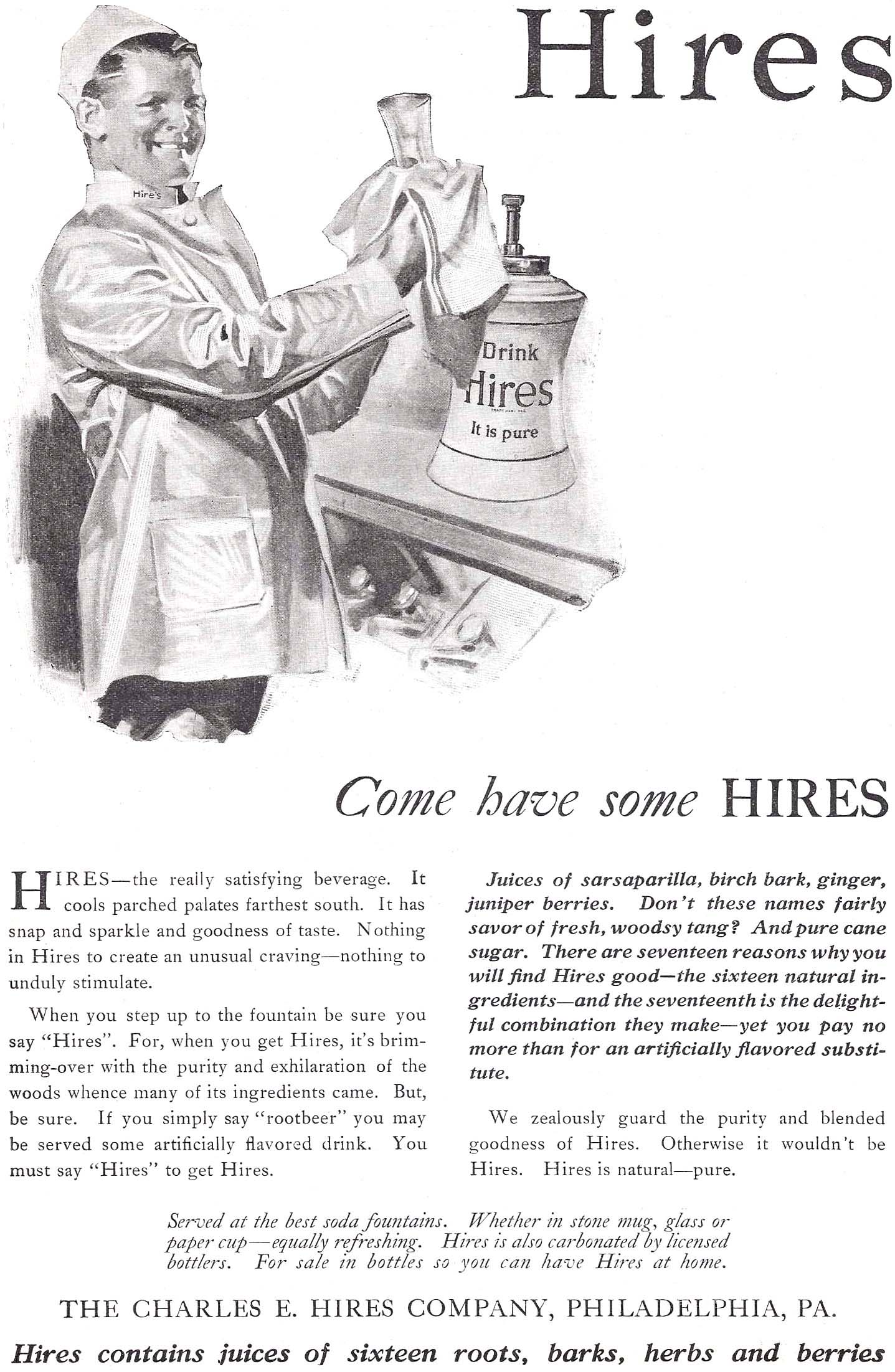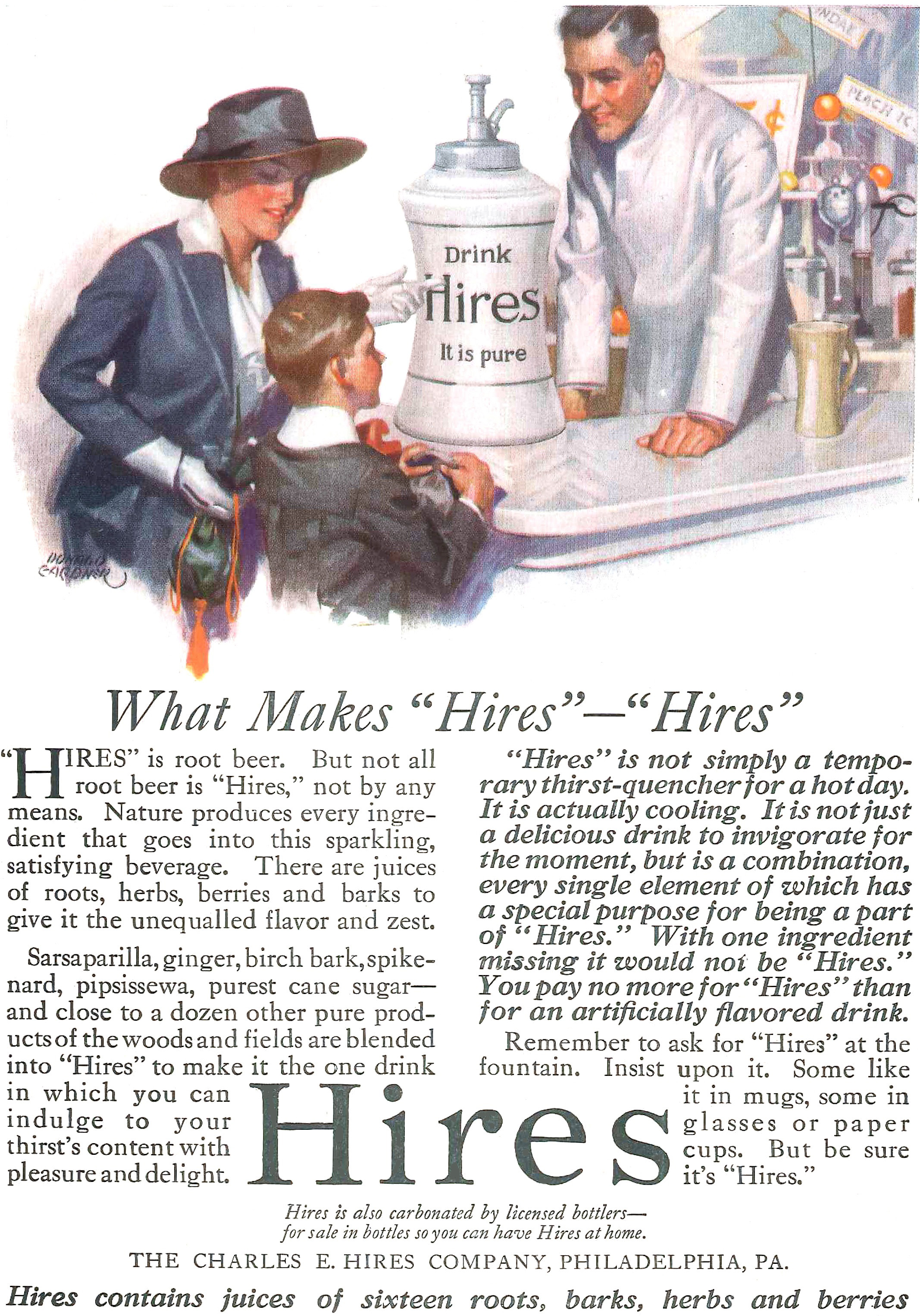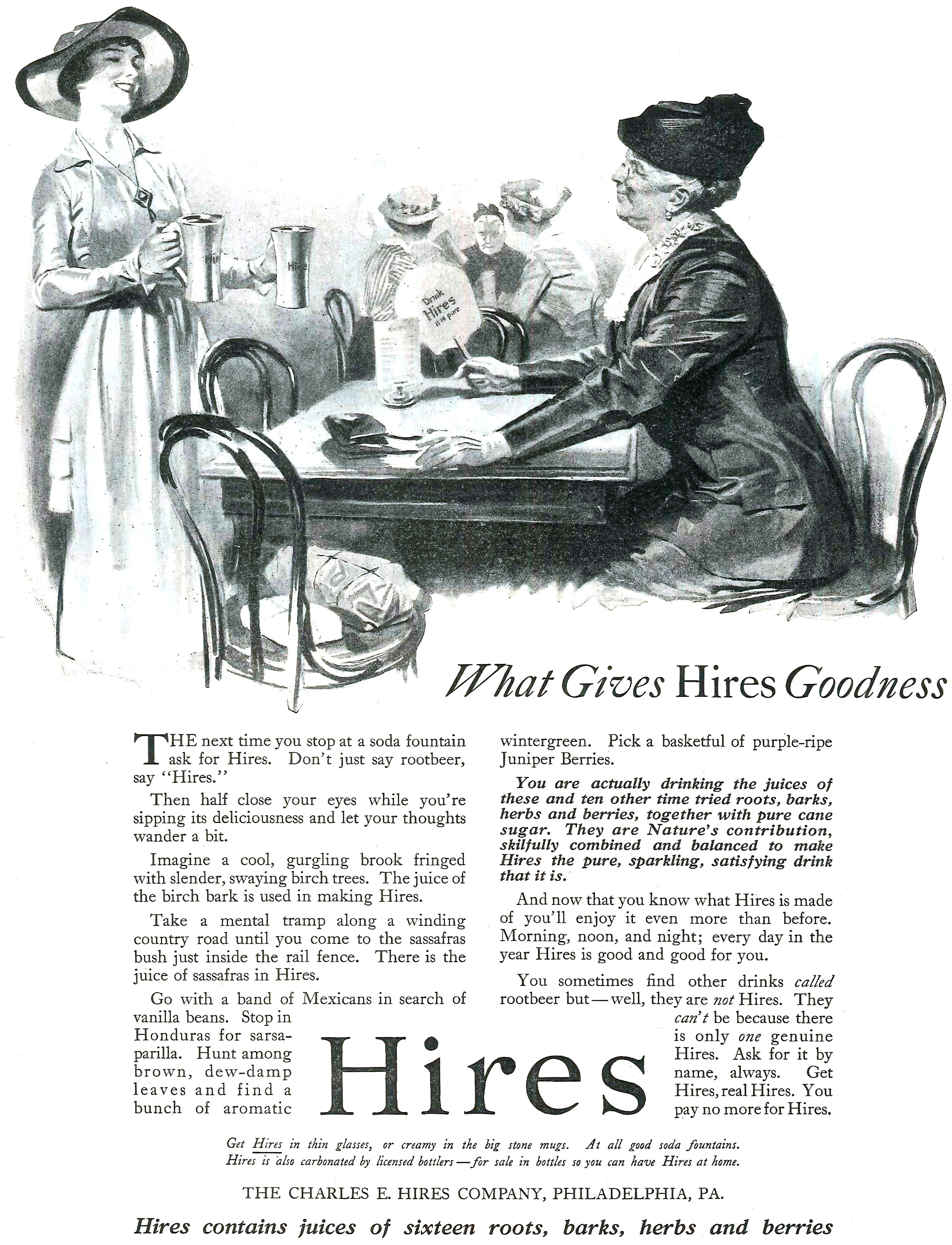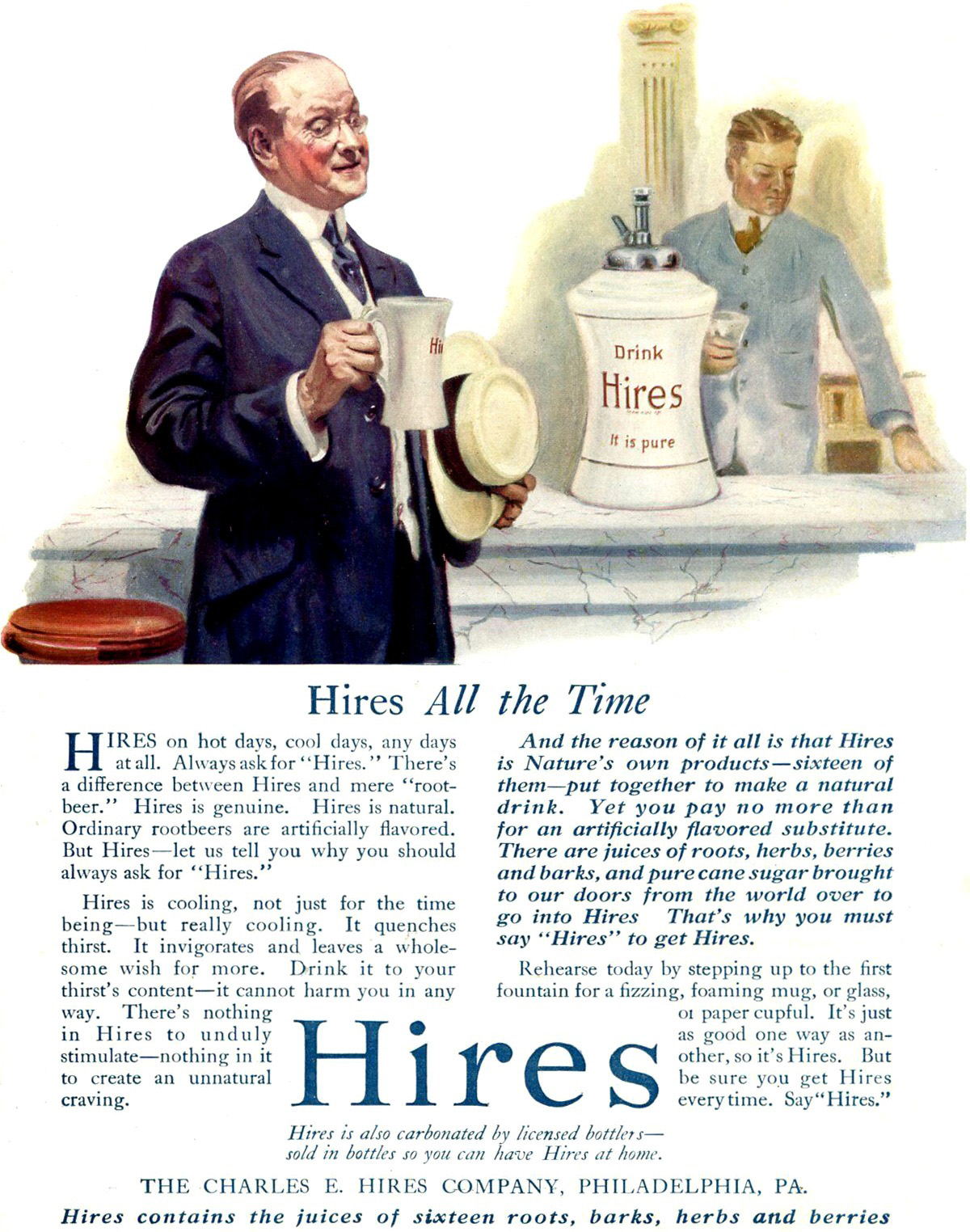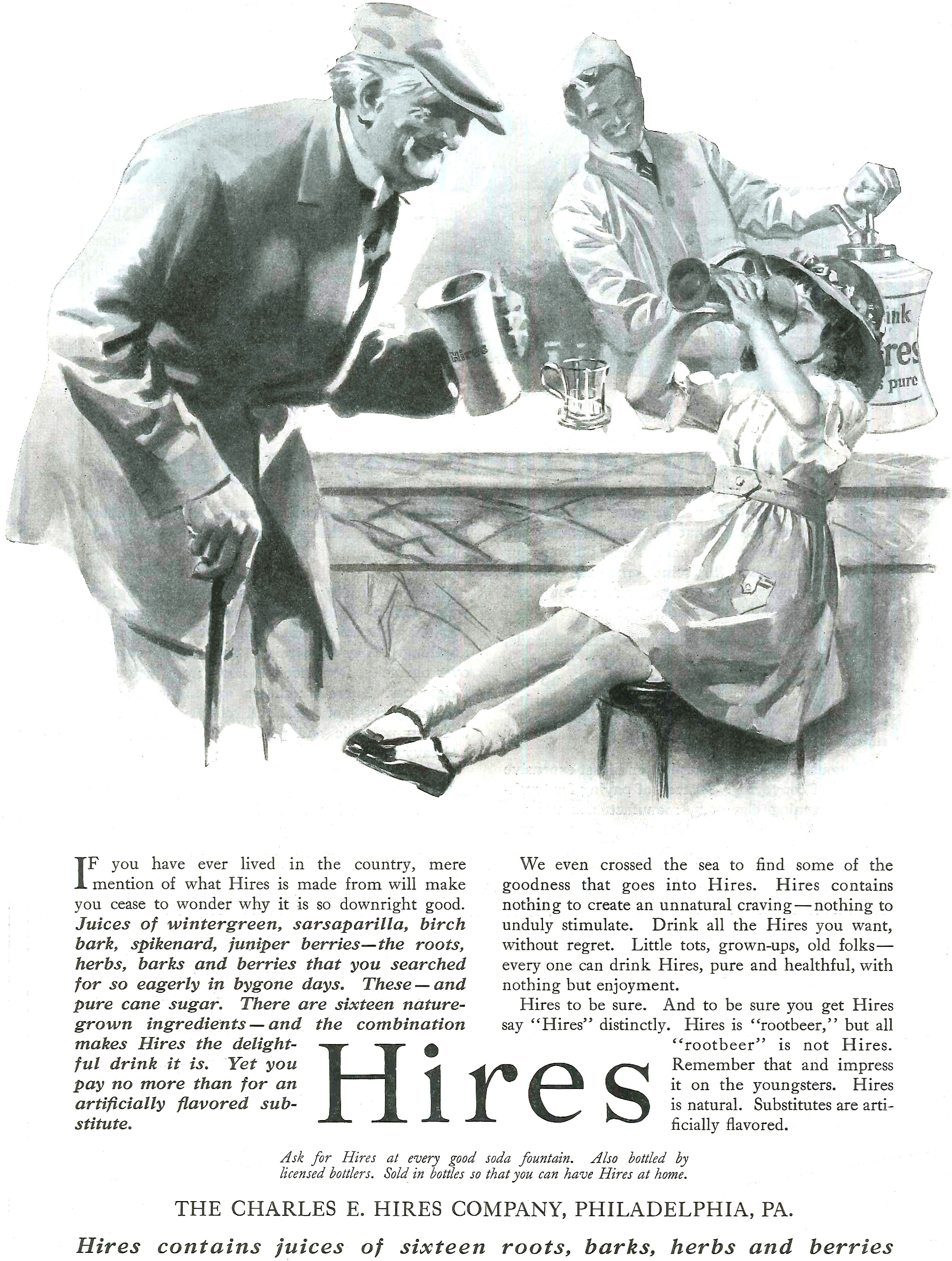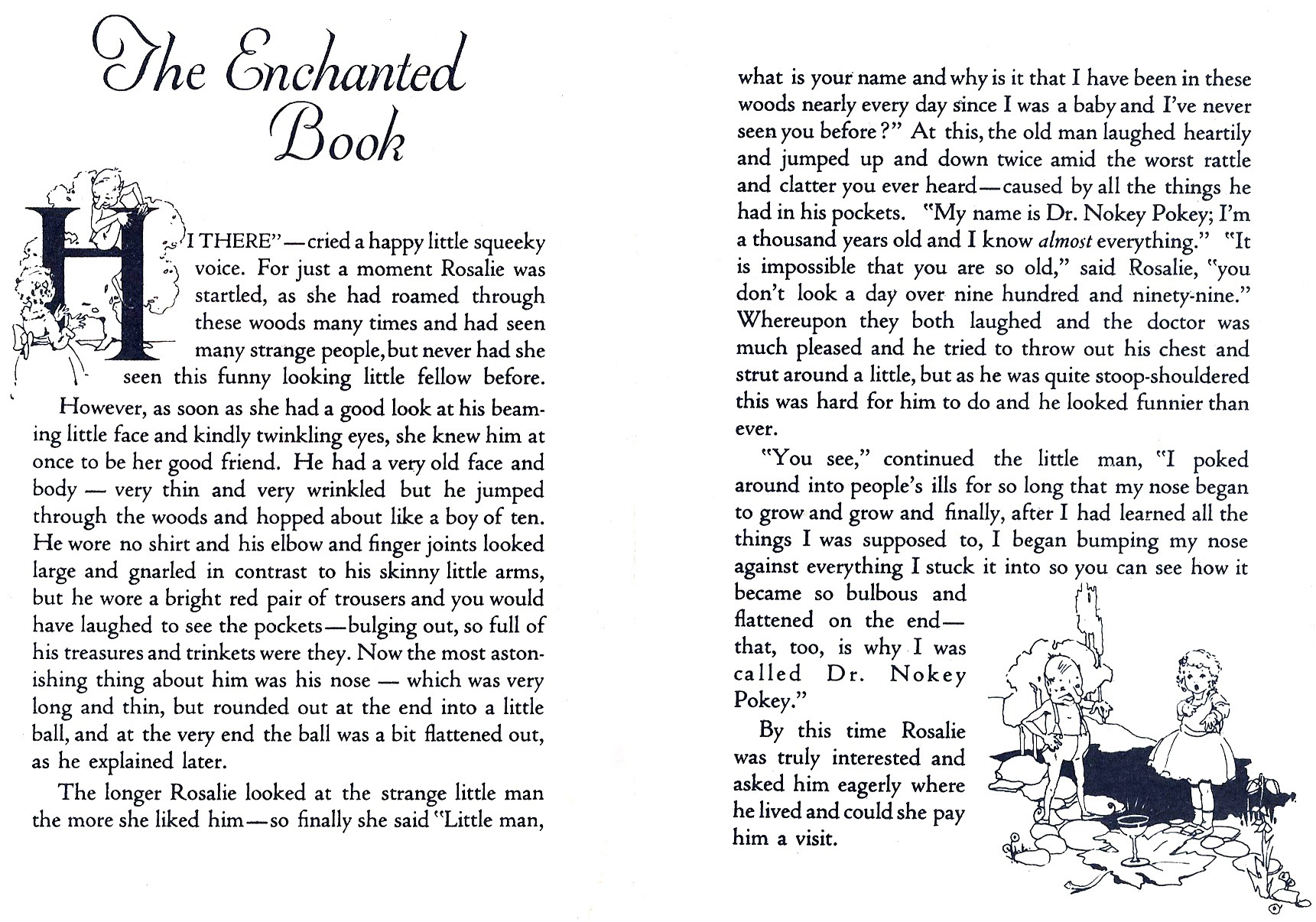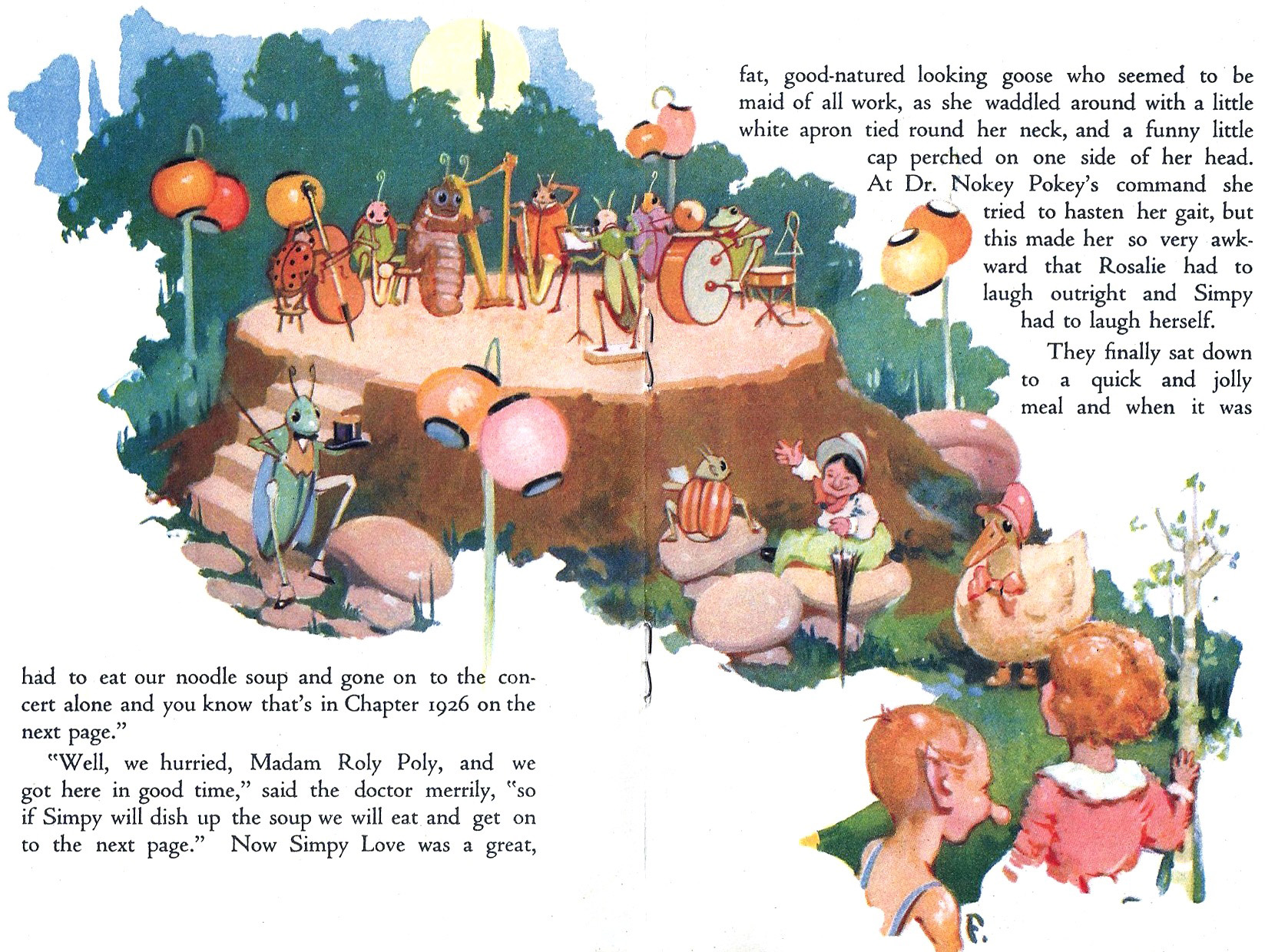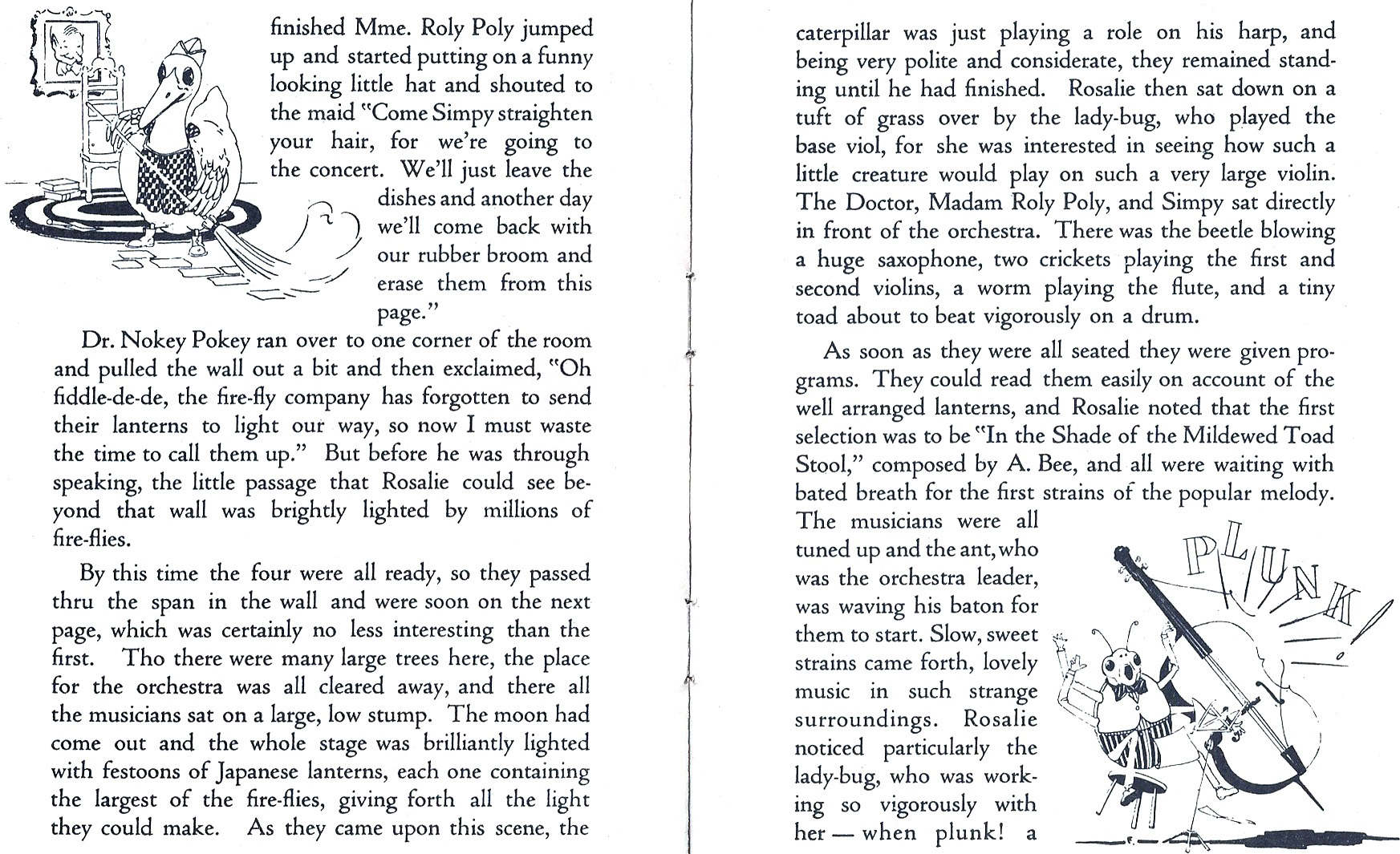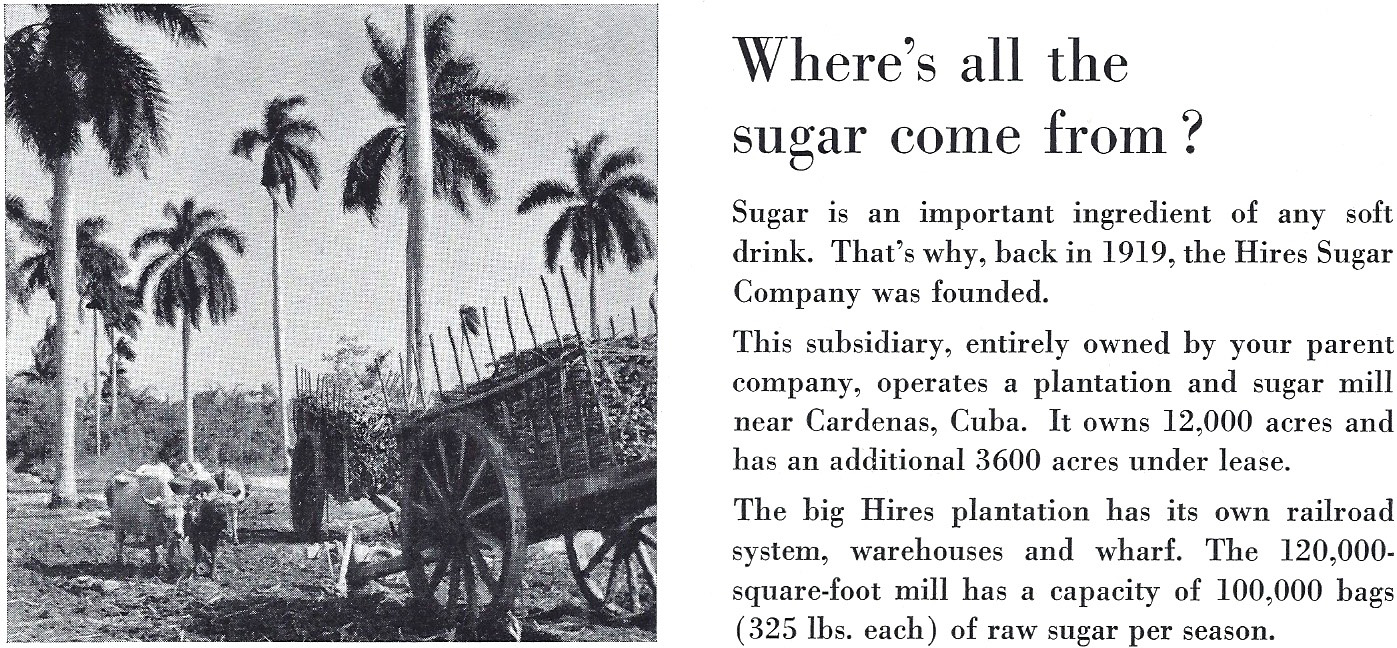1919
IT HAPPENED IN…1919
A new tax code prompted a 40% reduction in child
labor, impacting coal mining and canning.
Printer’s Ink
cautioned against “an insidious campaign to create women smokers” as
a reaction to cigarette advertisements that portrayed women in
“smart social settings.”
Newly introduced products included the timed,
pop-up, automatic electric toaster.
A 10% federal excise tax on soft drinks took
effect in February as a wartime measure.
5,194 U.S. soft drink bottling plants were in
operation. Per capita
consumption was 38.4 bottles.
The Hires Jar had undergone a major design change to a top pump, eliminating previous problems with sugar settling out of the syrup and clogging the base-installed spigots in earlier versions of the jar. Until June 1, 1919 these jars were loaned to storekeepers without charge in conjunction with an order for 25 gallons of Hires Finished Syrup, or five gallons of Hires Concentrated Syrup. Hires Red Diamond kegs were leased in four sizes: baby (8 gallon), small (17 gallon), large (45 gallon), and large (45 gallon) with double faucets. A Hires draft arm was also available on a lease basis. Sixteen ounce, stoneware Hires steins (“The stein that holds the chill”) sold for $4.00 per dozen.
(Figure 1919-01, soft drink
industry catalog)
A pocket-sized booklet promoted the four sizes of
Hires’ Red Diamond dispensing kegs.
(Figure 1919-02, Distinctive Quality booklet)
Seventeen gallon Hires Red Diamond kegs were leased perpetually to storekeepers for $100.00 in conjunction with their order for 50 gallons of Hires Finished Syrup, or 10 gallons of Hires Concentrated Syrup. A dozen stoneware steins were provided for free. Instructional decals were affixed to the keg in between the upper hoops. The top decal stated "DO NOT POLISH HOOPS. WIPE HOOPS AND BARREL WITH OILED CLOTH OCCASIONALLY." The lower decal warned "NOTICE: TURN LEVER OFF AFTER EACH DRINK IS DRAWN (3 SECONDS) OTHERWISE NO SYRUP WILL BE IN FOLLOWING DRINK. IF AUTOMATIC CARBONATOR IS USED, DRINKS CAN BE DRAWN CONTINUOUSLY WITHOUT TURNING LEVER OFF BY REMOVING MEASURING FEATURES. SEE INSTRUCTION CARD."
(Figure 1919-03, Hires Red
Diamond keg, 26.5” tall)
Some Hires Red Diamond kegs featured rectangular brass signage. This 15.0" x 9.0" example suffered numerous bends and scratches during its many years of service.
(Figure 1919-03.5, Hires Red
Diamond keg brass sign)
This stoneware stein is 5.5" tall and the base diameter is 3.75".
(Figure 1919-04, stoneware stein)
(Figure 1919-04, stoneware stein, base)
This smaller stoneware stein is 4.125" tall and the base diameter is 2.875".
(Figure 1919-05, stoneware stein)
This heavy, flint (clear) glass fountain syrup
display bottle bears an etched red label reading “Drink Hires It Is
Pure.”
(Figure 1919-06, flint glass fountain syrup
display bottle)
The diamond logo was also used for this clear, glass mug. The upper half has flashed-on, ruby red coloring like that used for souvenir glassware at state and county fairs during the same era. The label reads “DRINK Hires IT IS PURE.”
(Figure 1919-07, glass mug, 3.0” tall, 2.25"
diameter)
(Figure 1919-08, cardboard
hanger, 6.0” x 8.0”)
This flat, wooden, yellow, lead pencil reads “DRINK
Hires – IT IS PURE.”
(Figure 1919-09, yellow lead
pencil)
This flat, wooden, black-and-white, lead pencil reads
“Hires Rootbeer.”
(Figure 1919-10,
black-and-white lead pencil)
Hires introduced this redesigned, hourglass-shaped, ceramic syrup jar in 1919. It has a semi-automatic top pump and updated graphics.
(Figure 1919-11, ceramic syrup
jar, 13.5” tall not including the pump)
The base is marked “PATENT APPLIED FOR - LOANED BY AND THE
PROPERTY OF THE CHARLES E. HIRES COMPANY – PHILADELPHIA – Made in
Germany.”
(Figure 1919-11, ceramic syrup
jar base)
This poster pictures a newly re-designed Hires syrup
jar with a top pump, along with a full glass of root beer.
(Figure 1919-12, paper poster,
23.0” x 13.0”)
A similar poster pictures a paper labeled Hires crown
top bottle and an empty root beer glass.
(Figure 1919-13, paper poster,
20.5” x 11.0”)
The same image of a woman and child appeared on the
cover of the insert included with cartons of Hires Root Beer and Hires
Ginger Ale Extract. In
addition to advertising Hires’ Expansion Bottle Stoppers, Patent Stopper
Bottles, crown caps, and Everedy Cappers, the insert claimed:
More than fifty years ago, remembering the delight he
had taken as a child in the old-fashioned rootbeer – laboriously
concocted from roots and berries by country folks – Charles E. Hires
decided to put up a rootbeer extract for home use.
He consulted leading physicians in deciding upon a mixture of
roots, barks, herbs and berries that would produce the most healthful
and well balanced drink possible.
Clearly a copywriter opting to embellish the facts made up these claims. "More than fifty years ago" would have been pre-1869. Likewise, no primary resource material confirms Charles E. Hires consulted physicians when concocting the formula for Hires Root Beer.
A larger-sized version of this advertisement ran in Life magazine:
(Figure
1919-14,
Saturday Evening Post and
The Literary Digest,
May 10, 1919)
(Figure
1919-15,
Saturday Evening Post, May 24, 1919 and
The Literary Digest,
May 31, 1919)
(Figure
1919-16, Life,
June 5, 1919)
(Figure 1919-17, Saturday Evening Post, June 7, 1919 and The Literary Digest, June 14, 1919)
The older woman is holding a paper fan that reads
“Drink Hires It is pure.” Readers
were advised to “Get Hires in thin glasses, or creamy in the big
stone mugs. At all good
soda fountains.”
(Figure
1919-18,
Saturday Evening Post, June 21, 1919)
Readers' eyes are quickly drawn to the overly large,
out-of-scale Hires jar on the marble counter.
(Figure
1919-19, Life,
July 3, 1919)
According to the Federal Trade Commission on Milk and
Milk Products, “the Wildi and Hires (Condensed Milk) companies,
relatively small producers in 1914 and 1915, came under the influence or
control of Nestle’ in 1915 or 1916, and later were formally purchased.”
A July 14, 1919 letter from Nestle’ to the FTC indicated Nestle’
had taken control of several Hires plants during World War I, and “the
purchase was made upon the solicitation and desire of the previous
owner.”
This advertisement was used extensively in the late summer of 1919.
(Figure 1919-20,
Saturday Evening Post,
July 26, 1919,
Leslie’s Weekly, August 2, 1919,
The American Magazine,
August 19, 1919, and a slightly different format in
The Literary Digest,
August 2, 1919)
Continuing to target market families, Hires had the
U. S. Printing and Lithography Company produce
The Enchanted Book, a 12 page
booklet containing a fantasy story for children, while promoting Hires
Household Extract, plus Hires at fountains and in bottles.
The cover art repeats the mother and child image used for the
“Precious Health” posters.
(Figure 1919-21,
The Enchanted Book)
(Figure 1919-22,
1919 Hires Price List of
Hires Fountain Syrup)
Hires completed purchase of the Central Dos Rosas
sugar plantation in Cuba November 18, 1919 (see 1918 chapter for
details). Here’s how
The Story of Hires reflected
on this acquisition in 1948:
(Figure 1919-23,
The Story of Hires)

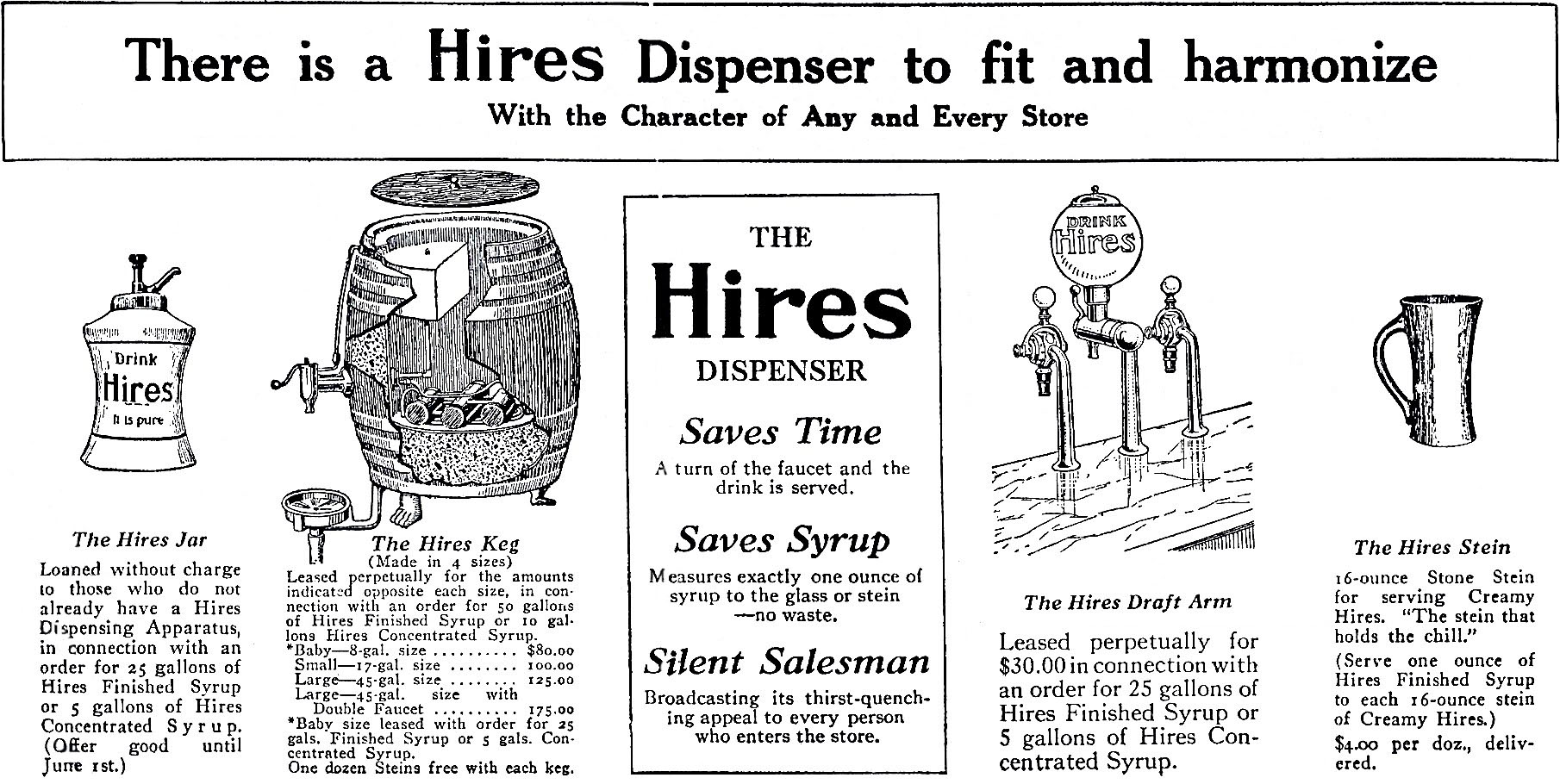


%20IT%20IS%20PURE%20-%20rectangular%20brass%20keg%20sign.jpg)
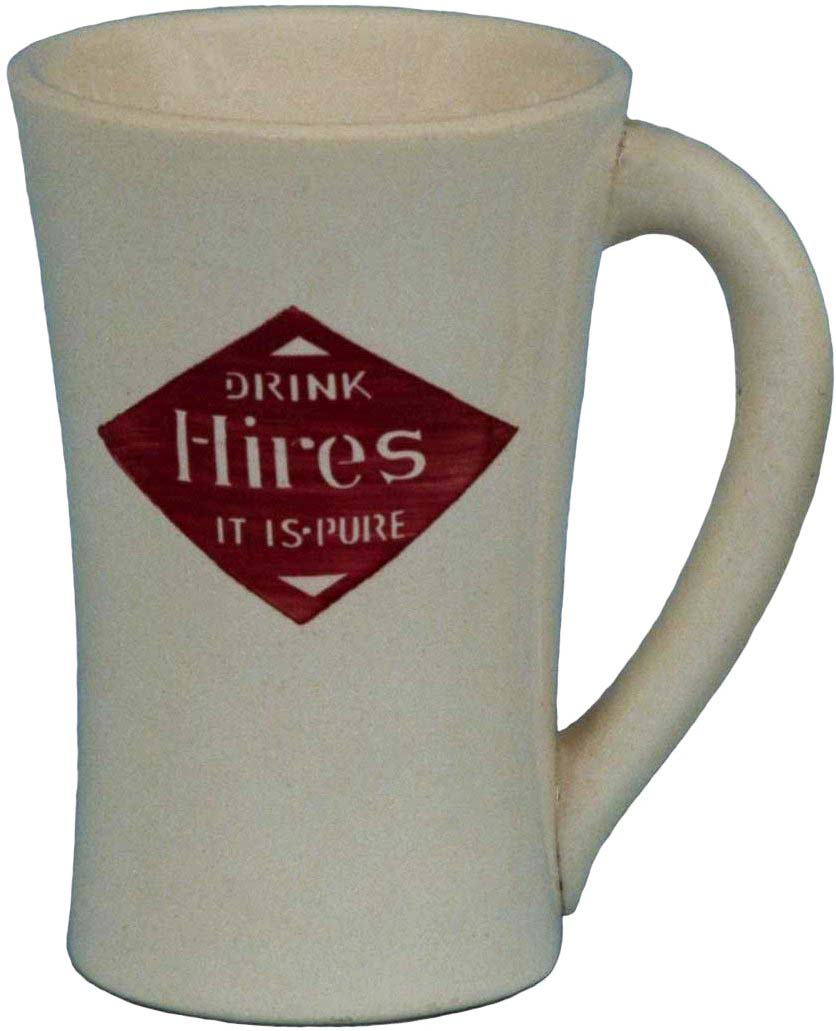
%20it%20is%20Pure%20with%20red%20diamond%20logo%20-%20stoneware%20stein%20-%20larger%205.5%20x%203.75,%20base%20marked%20Germany.jpg)
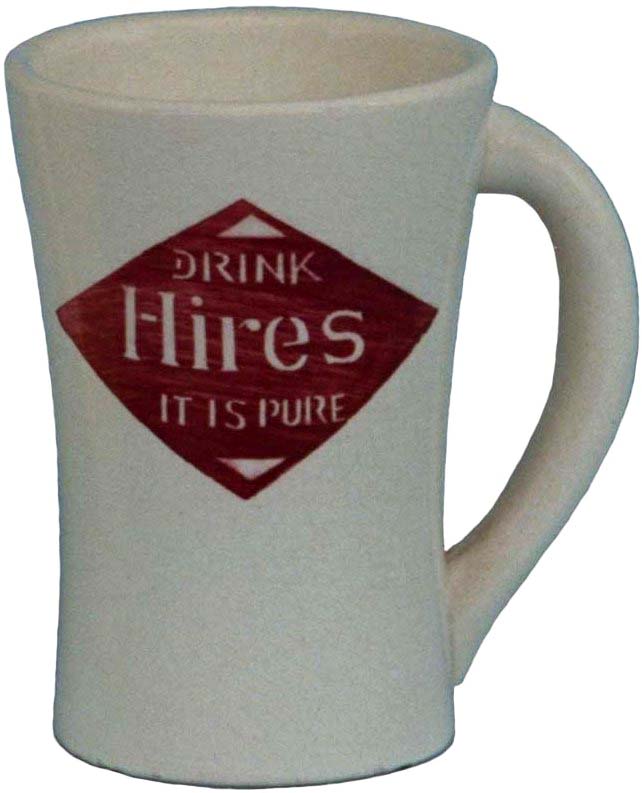

%20IT%20IS%20PURE%20in%20diamond,%20clear%203.0%20tall%20x%202.25%20dia%20mug%20with%20ruby-red%20flashing%20top%20half.jpg)

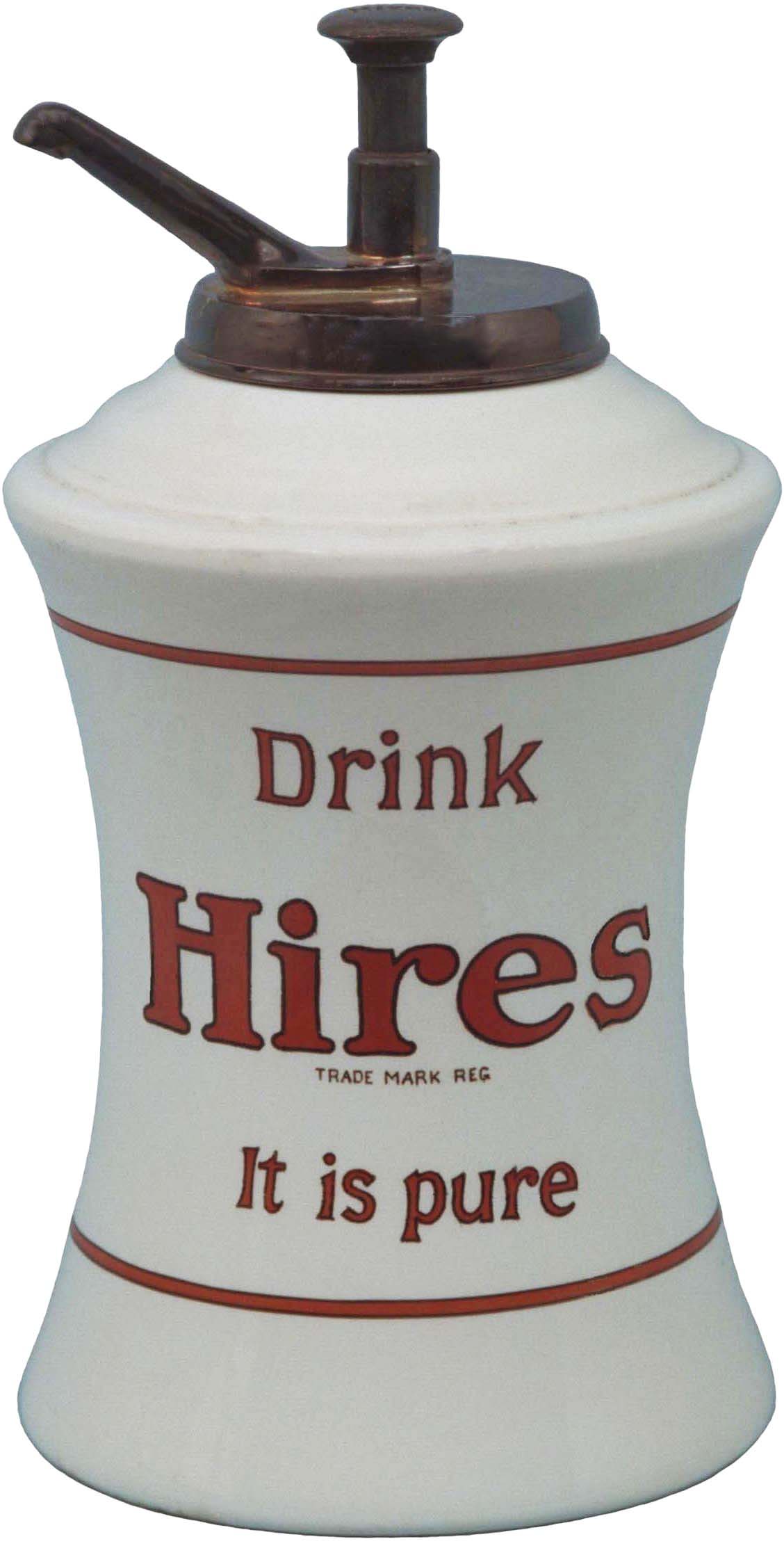
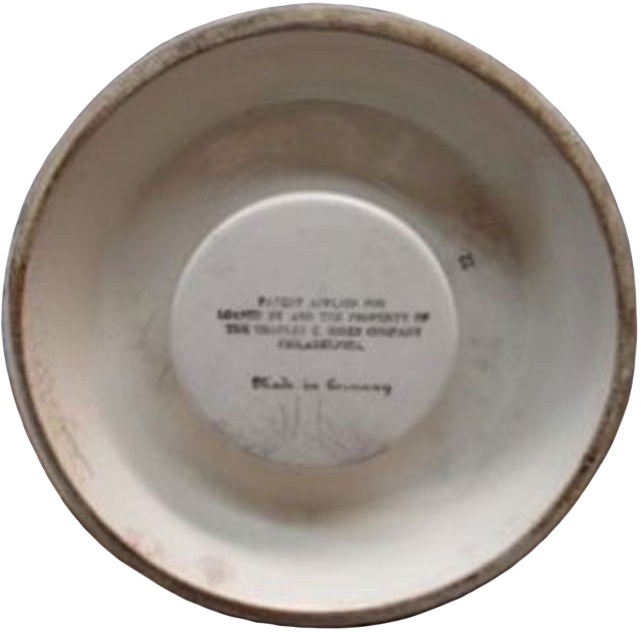
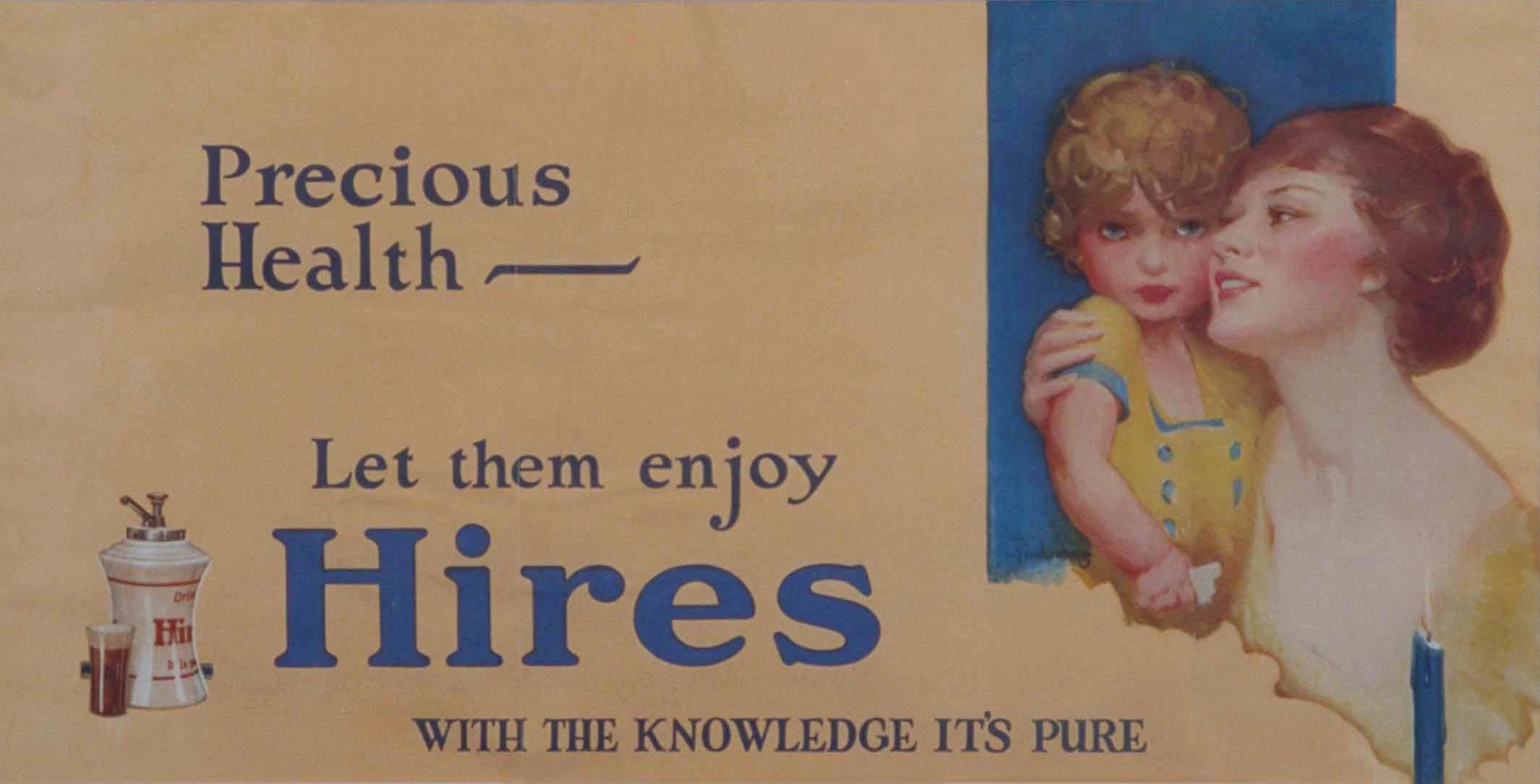
%20with%20the%20knowledge%20it's%20pure%20woman%20with%20child%20paper%20poster%2020.5%20%20x%2011.jpg)
